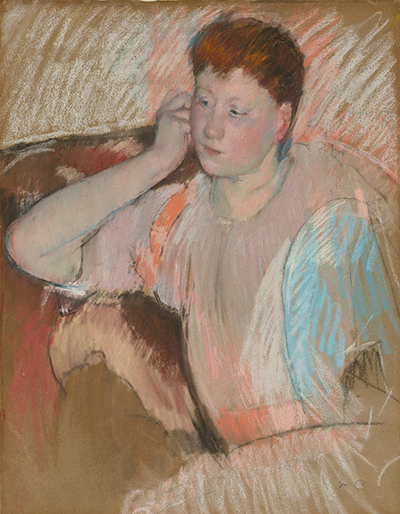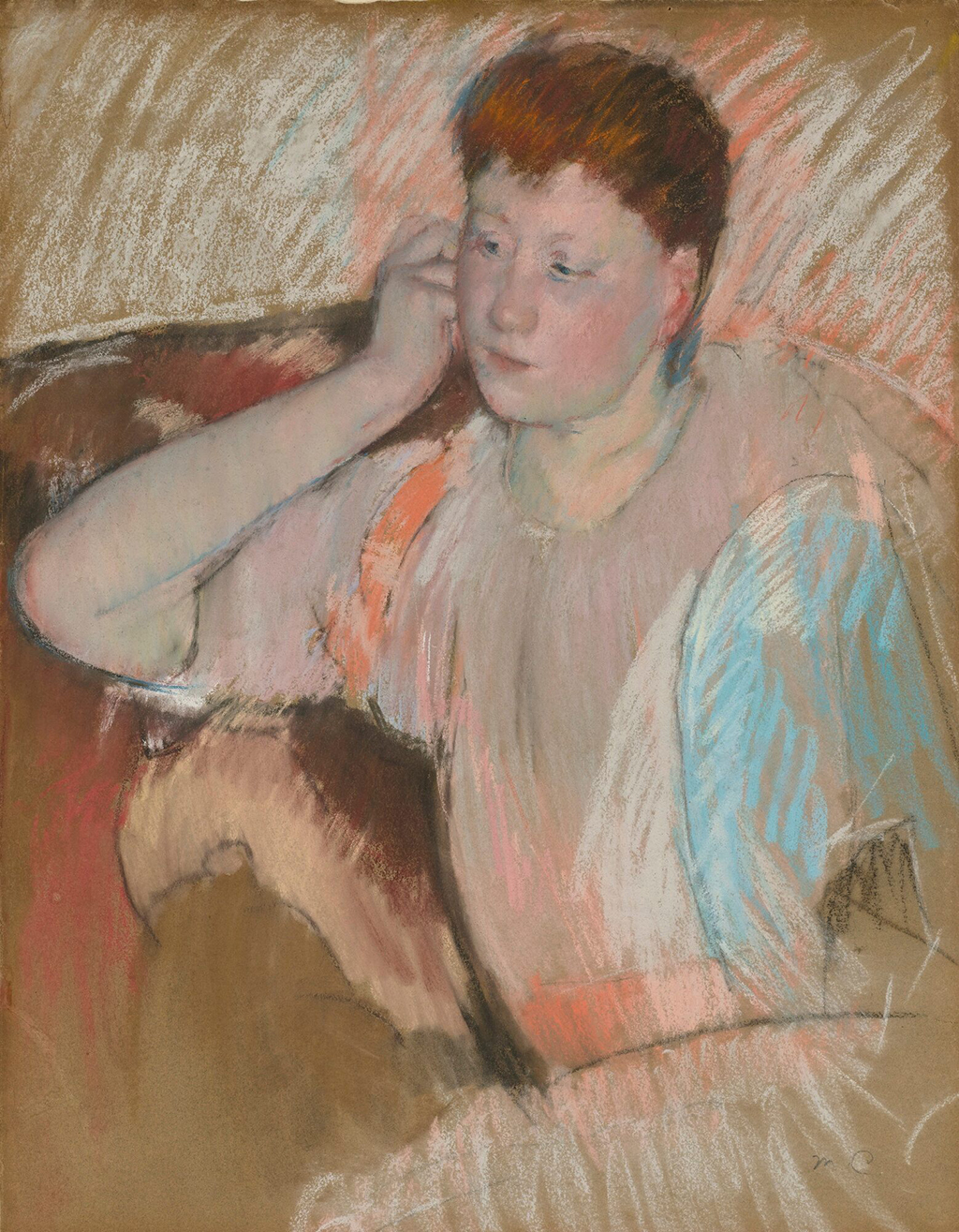This pastel drawing by Mary Cassatt is loosely dated at around 1890-93 and features many of the stylistic elements which has made her oeuvre just so popular. Her paintings and drawings remain some of the most reproduced from any female artist in the history of art.
This relatively simple portrait features a female with ginger hair playing with her ear as she looks to her right. The woman is fairly well-built, perhaps larger than most models used by Mary Cassatt. She wears a simple pink outfit with little makeup as was the artist's way. She appears to be leaning back on a brown couch, and may actually have been just leaning her head towards her hand. Her hair is fairly short for this period, making this choice unusual for the artist, though this drawing is relatively early in her career. It seems that the artist perfected her approach in the years that followed this piece, though she always retained that interest in red-toned hair. Another element to this drawing which remained consistent with later artworks is how Cassatt worked expressively with fast, long strokes of pastel in areas of the work that she deemed less important, which in this case is the background detail, where wild strokes of white are added. She does similar in the very bottom of the artwork as well, not concerned about finishing every last detail within this piece.
Clarissa, Turned Left, with her Hand to her Ear, as far as we can tell, went unsold in 2012 at a large auction termed as American Art. It was completed at Sotheby's in its New York house. They had given a pre-sale estimate of $500,000 - $700,000 and it appears that the offers that came in did not meet the seller's minimum price. This can happen, and should not be considered a rejection of the artist herself, nor the artwork, but can simply be more about the circumstances of the sale on the day. Other Cassatt artworks have sold for close to $1m and so the valuation does not seem unusual or out of sync. This earlier piece may not be considered as technically or aesthetically pleasing as later drawings from Cassatt, and perhaps that explains why it ultimately went unsold at the time. It will likely come up for sale again in the next few years, and perhaps its valuation will be realised next time.
Mary Cassatt would become an important member of the Impressionist and a rare addition as a female, and as a American. She was joined by Berthe Morisot, who contributed some highly memorable artworks of her own with the likes of The Harbour at Lorient, Summer's Day and In the Dining Room. Both of these women played an important role in changing the minds of male art academics and critics, and potentially opening the door for future generations of female painters. As with any struggle, it is always those who break down barriers at the start who have to be the strongest and most impressive, and it can never be denied that both Cassatt and Morisot had sufficient mental strength and desire to succeed within a male-dominated world, and thankfully had the technical qualities necessary in order to eventually prevail. This was instantly recognised by their male colleagues, who generally encouraged them rather than feeling threatened as others might have done.





